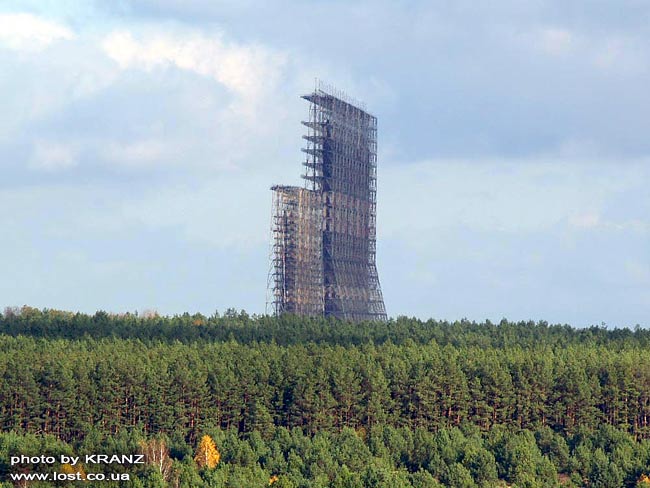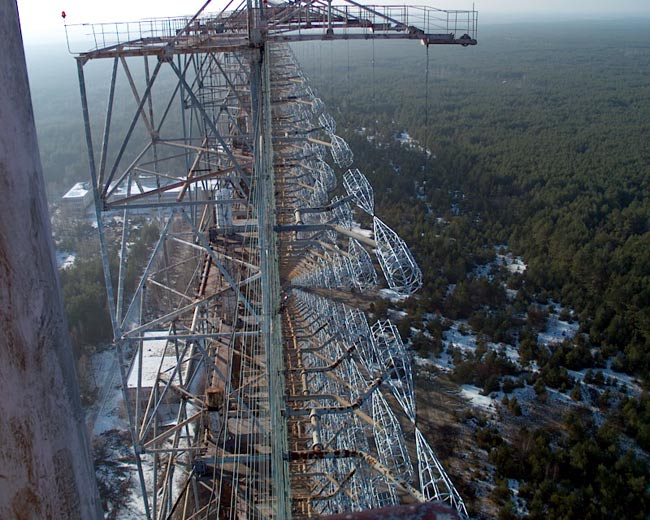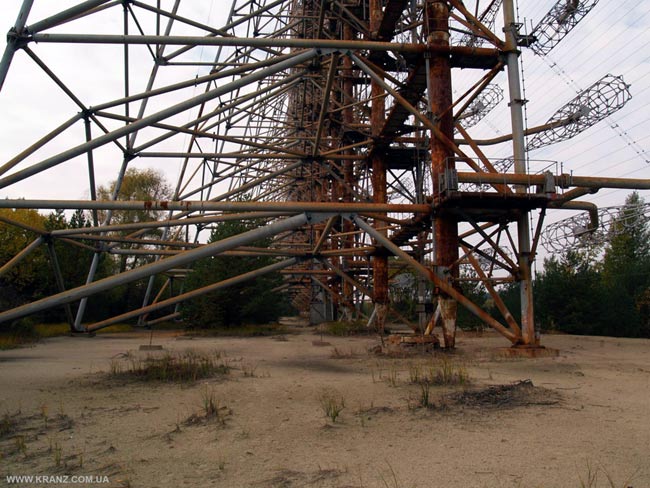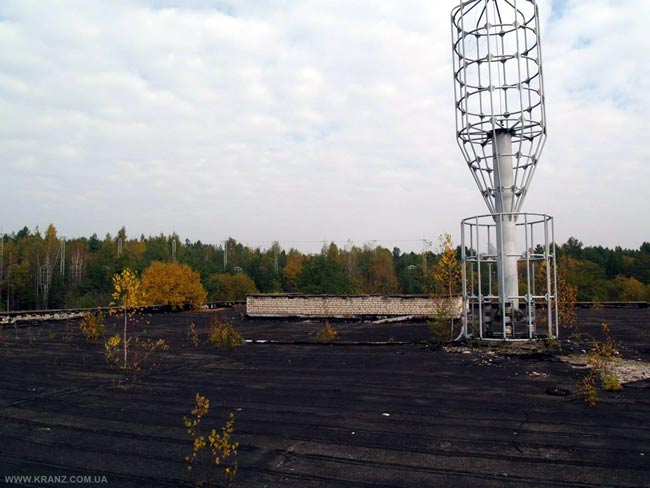This does not have much application for broadcast radio, other than the technical facilities are fascinating. I did once hear the slow speed version on 500 KHz distress and calling frequency, which is below the broadcast band. DUGA-3 Over The Horizon Radar (OTH) was a Soviet early warning radar system that operated on HF (between 3-30 MHz). When I was in military communications, stationed on Guam, we were often plagued with the “woodpecker” sound, oftentimes pegging the signal strength meter on whatever frequency we were using. On any typical day, at least once or twice we would have to change frequencies due to the “RAT TATATATATATATATATATATATATAT!” coming in over the top of what we were trying to do. Anyone who listened to shortwave radio or was a ham radio operator from the mid 70’s on through 1989 will be familiar with the sound.
The NATO classification for the system was STEELYARD. I don’t know if it is a coincidence or not, but the name fits the system design. There were three systems, one located near Chornobyl, inside the evacuation zone, which was abandoned intact. The second was near in Ukraine, outside of the Chornobyl exclusion zone, and the third was on the Russian Pacific coast, near the island of Sakhalin.
Basically, it operated in the HF frequency range, 3-30 MHz with a power of about 10 million watts (some sources up to 40 MW). The propagation conditions were continuously monitored with an ionospheric chirp sounder (the civilian version looks something like this). The best frequency for the target area was then chosen and used without regard to band plans or frequency planning. In fact, often the Soviet shortwave propaganda station Radio Moscow was also interfered with. The target areas were the missile launching and testing areas used by the US and Great Britain. The object resolution was about 15 km, which is not that good, but good enough to determine the origin and flight path of a potential missile.

The remains of the DUGA-3 array near Chornobyl represent some real engineering feats. First off, the tall towers are 146 meters (479 feet tall), the short towers are 90 meters tall (295 feet) and the system is aligned in a row 750 meters (2,460 feet long). The taller towers are for lower frequencies because they have larger transmit antenna elements, thus the shorter towers are for higher frequencies.

The array itself is quite an impressive close-up. The cage like devices are the radiating elements of the antenna. The elements are feed by open wire feed line from the bottom of the tower. Behind the radiating elements, you can see a series of wires, these acted as a reflector, directing the energy transmitted out the front of the array.

Considering the wind load, these are substantial towers. I would say the wind load on the face of the tower would be almost equivalent to flat plate. The towers are strongly back-braced.

The ionospheric chirp sounder receive antenna is also located at a site known as “The Circle.” An ionospheric chirp sounder sweeps the HF spectrum from one location and is received in a second location. This gives real-time radio propagation information. The Circle is about ten miles away from the STEELYARD array.

The other DUGA-3 radar stations were scraped after the system was turned off in 1989, this one was abandoned intact. Over the years looters have made off with most of the transmitter and receiver apparatus, wiring and associated scrap metal. Only the towers remain and empty buildings remain.
Pictures from Lost Places, more pictures and information there.
